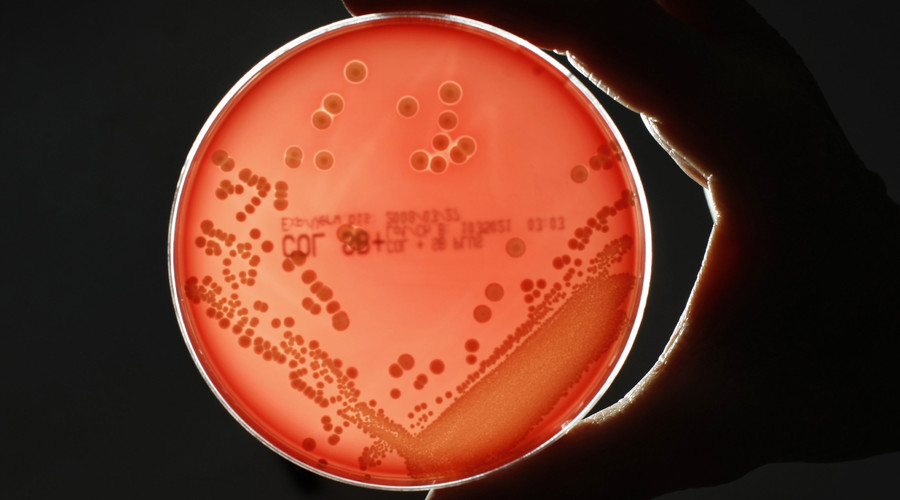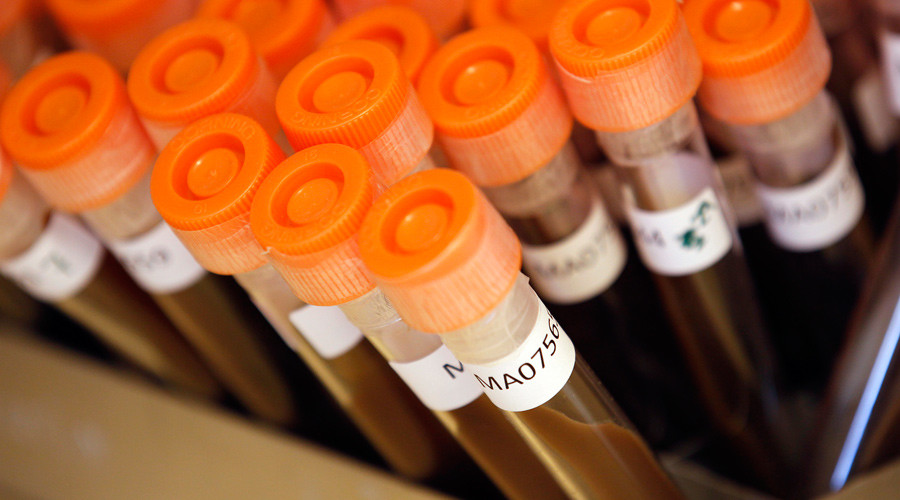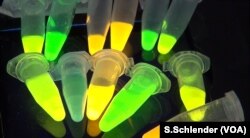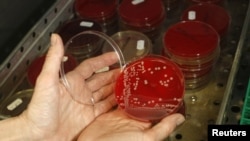That’s why scientists at the University of Colorado’s Biofrontiers Institute are looking beyond biologically-based medicine. They’re developing an “antibiotic” that they can update with the click of a keyboard.
Quantum dots
In a high-tech lab at the University of Colorado, Anushree Chatterjee wears safety goggles and purple gloves as she carefully reaches into a sterile container to examine Petri dishes that hold some of the world’s most dangerous microbes: disease-causing superbugs that are hard to stop with traditional drugs. “They were resistant to, in some cases, more than 20 different antibiotics," she explained. "They can actually live in pretty high levels of antibiotics. Not only can they survive but they can actually thrive in the presence of antibiotics.” It takes years to develop traditional, biologically based antibiotics to fight them. Chatterjee’s husband and colleague, Prashant Nagpal, says that in the meantime, we’re losing the race against superbugs. But he had an idea: "Let’s develop a system that adapts, if not faster, then at least at the same rate as the microbes do.”
Ultraviolet light reveals different "species" of quantum dots that have been programmed to attack specific microbes.
To reach this goal, Nagpal’s lab analyzes the DNA of superbugs, then creates a highly targeted antibiotic, not in years, but in just a few days. He does this by making the antibiotics out of quantum dots - tiny semiconductor particles. "Anytime we think of semiconductors," he says with a laugh, "we always think, oh, it’s going to end up in a camera, or on top of our rooftops. What we've shown here, is you could use the same semiconductors, shrink them down and put them inside cells.” Each quantum dot is 20,000 times smaller than a living cell. When millions are mixed with water, ultraviolet light reveals different varieties that glow in beautiful colors of yellow, orange and green.
For stopping a superbug, Nagpal says a tube as small as a thimble can pack a mighty punch. And if the superbugs adapt quickly, researchers can quickly change the next round of quantum dots. “One of the exciting things about this therapy is we have these tiny little quantum dots, but if you start taking one atom off the surface or add one more, it’s going to change the radicals it potentially forms, it changes its potential," Nagpal said. "So if the bugs adapt to this particular free radical, we have a lot more options. We can change the composition. . . we can change the size, we can change the shape of these dots.”
Tiny light-activated missiles










